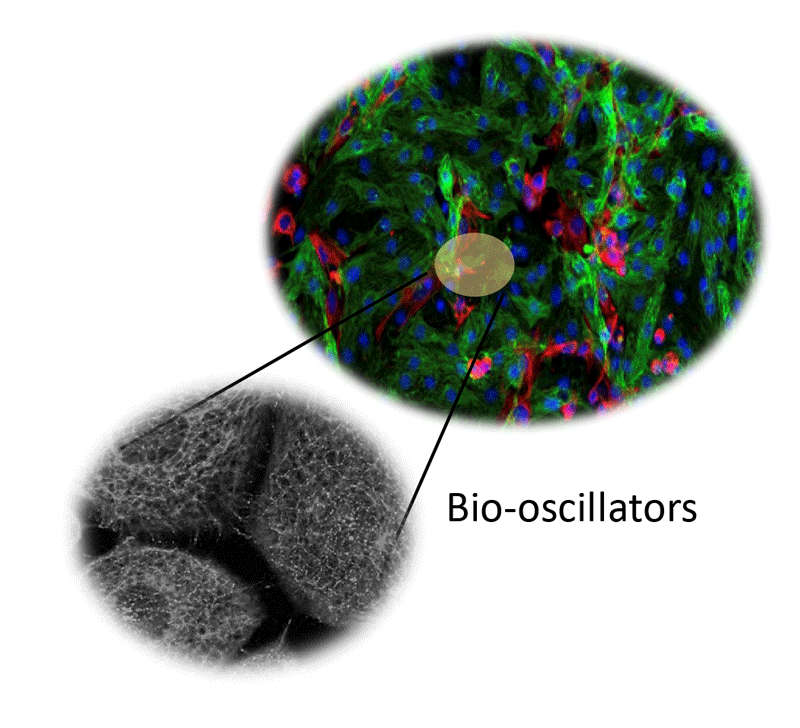Computing using Biology

Computing using Biology
Current designs that explore biological components for biocomputing leverages the information processing units of the cells, such as DNA, gene or protein circuitries, which are inherently slow (hours to days speed). Using electrically active cells that could individually operate in the hundred Hertz regime, and can be connected as networks to perform parallel tasks, can transform biocomputing and lead to novel ways of information processing. In this project we are exploring the potential of electrically coupled oscillator networks made of living heart muscle cells to form a collective computing fabric for solving computationally hard problems such as optimization, learning and inference tasks. Heart muscle cells are electrically active components that can initiate and relay electrical signals without loss. They spontaneously beat (i.e. oscillate) at a stable pace, and when coupled with each other through ion fluxes, they synchronize to a locked, steady frequency. In this study, it is hypothesized that reconfigurable circuits fabricated using coupled heart muscle cell oscillators, or bio-oscillators, can be configured into functional continuous-time dynamical systems to solve computationally hard problems. Towards this end, we are using state-of-art nanobiofabrication methods to build bio-oscillators and to bi-directionally couple them through nanoporous ionic membranes for programmable computing. The design space will be explored for the geometry and size of the individual bio-oscillators, nanoporous membrane design for bio-oscillator connectivity through ion fluxes, as well as the network topology and fabrication feasibility of large bio-oscillator arrays. In addition to their inherent connectivity, scalability and parallel processing ability, the muscle cell-based approach requires minimal energy mostly in the form of sugar, and as such will be a low-energy alternative to current energy demanding traditional computing approaches for solving hard optimization problems using heuristics based digital computing techniques.
Funded by:
NSF
